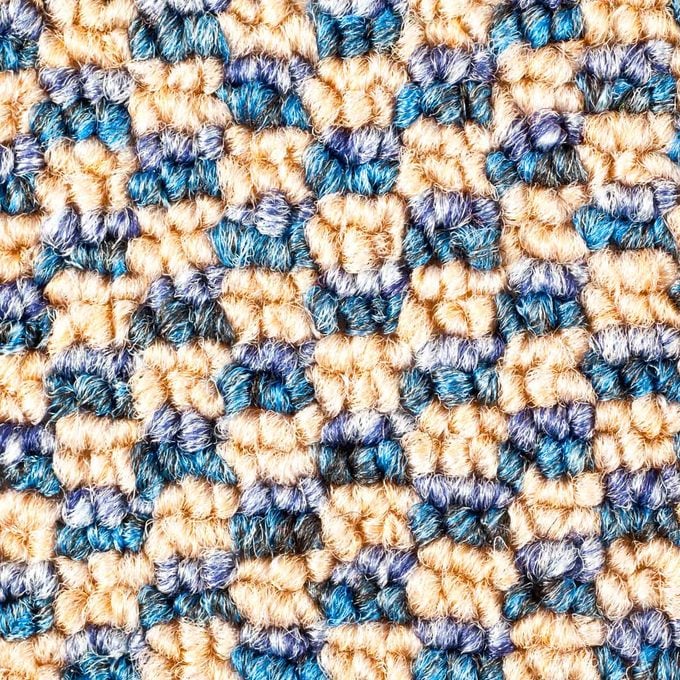What to Know About Berber Carpet
Updated: May 24, 2023
Everything you need to know about Berber carpet and whether it's right for your home.

Berber carpet is a popular flooring option worth considering. Here’s what to know about Berber carpet and whether it’s right for your home.
What Is Berber Carpet?
The defining feature of Berber carpet is its looped construction. Berber carpet features loops (made from fibers such as olefin, nylon and wool) that are sewn or tufted into the carpet’s backing. Unlike traditional pile carpet, the loops are usually left uncut. However, you’ll also find cut Berber (a.k.a California Berber) and cut-and-loop Berber, which is a combination of loops and cut loops.
Berber carpet traces its origin to the Berbers, an ethnic group native to North Africa. They are famous for their hand-woven carpets that feature distinct knot patterns.
If you have pets, watch this video to learn how to get pet urine stains out of carpet.
Modern Berber Carpet Features
When choosing a modern Berber carpet, your options include:
-
Loop style: The size of the loops can vary from low and tight to high and loose. The loops can be a uniform height or they can vary in height.
-
Color: While traditional Berber carpets are bright, modern Berber carpets can be virtually any color, including a vast array of neutrals. A popular option is multicolored Berber carpet with flecks of color throughout.
-
Carpet fiber: The highest-quality (and priciest) Berber carpets are made from wool and nylon. Berber carpets can also be made from less-expensive olefin (polypropylene), polyester or a mix of fiber blends.
Pros of Berber Carpet
-
Inexpensive: Like almost all types of carpet, Berber carpet is one of the most affordable flooring options around. This is especially true if you opt for a non-wool Berber carpet. Berber carpet made of olefin costs as little as $5 to $6 per square foot, installed. That’s a bargain when you consider that hardwood flooring averages around $8 to $22 per square foot, installed.
-
Stain resistant: Most Berber carpet has a tight weave that helps it resist stains.
-
Durable: Unlike cut-pile carpets with fibers that can unravel over time, the fibers in Berber carpet are woven to the backing and tend to remain intact. That’s why you often see Berber carpet in high-traffic areas and commercial buildings.
-
Easy to clean: Spills tend to sit on the surface of the loops. This makes it easy to clean stains because they don’t have as much of a chance to penetrate and set in. Berber carpet with flecks of color does an excellent job disguising dirt and stains.
Cons of Berber Carpet
-
Snags: If a loop gets caught, it can break and even tear out of the carpet’s backing. The most common snag culprits are vacuums, high heels and pet claws.
-
Difficult to remove stains: While Berber carpets are easy to clean in general, they are not so easy to clean when stains do set into the fibers.
-
Can get matted: Over time, the loops can look matted and worn. If that’s a concern, opt for a Berber carpet with small loops made out of nylon.
-
Not very soft: Many (but not all) Berber carpets lack the soft feel underfoot that you get with pile carpet.
